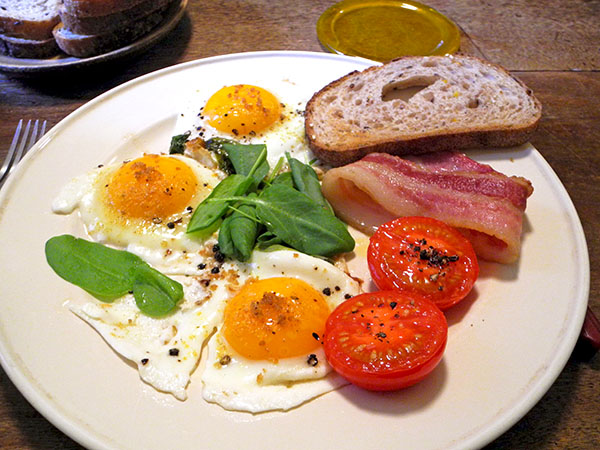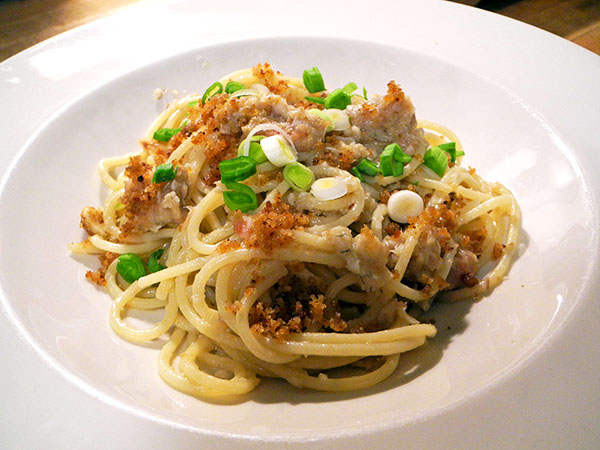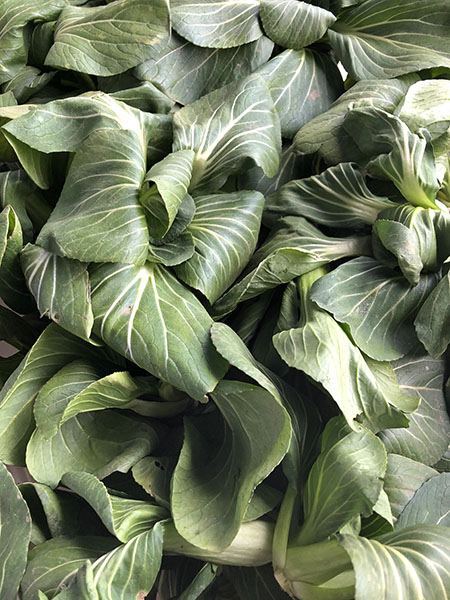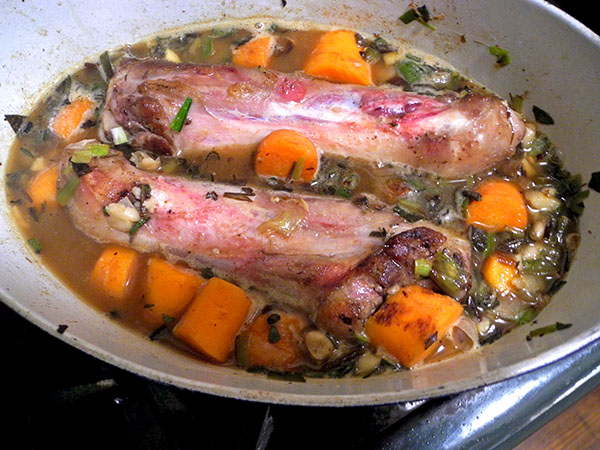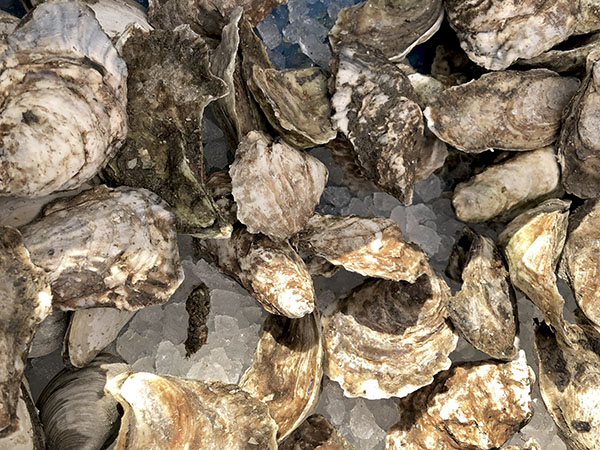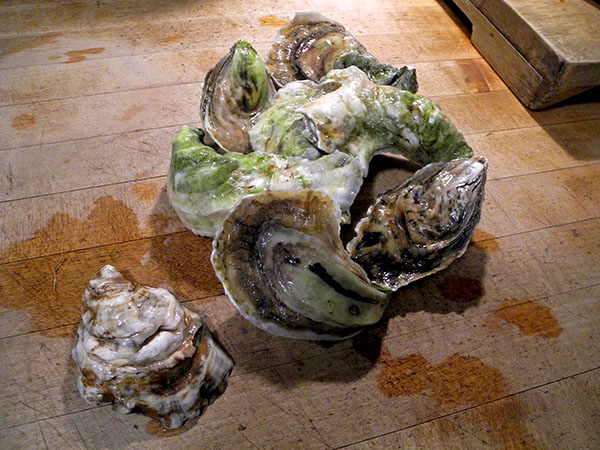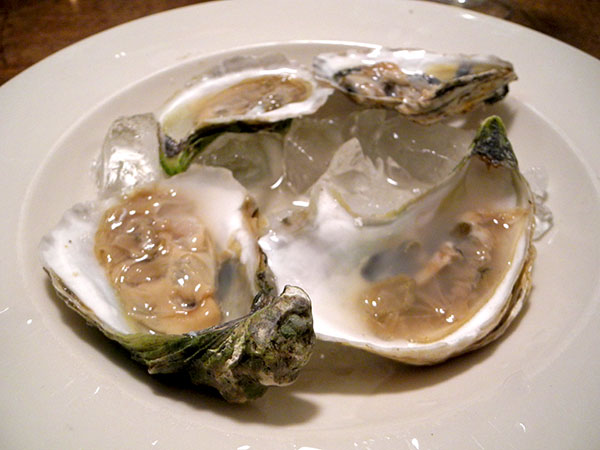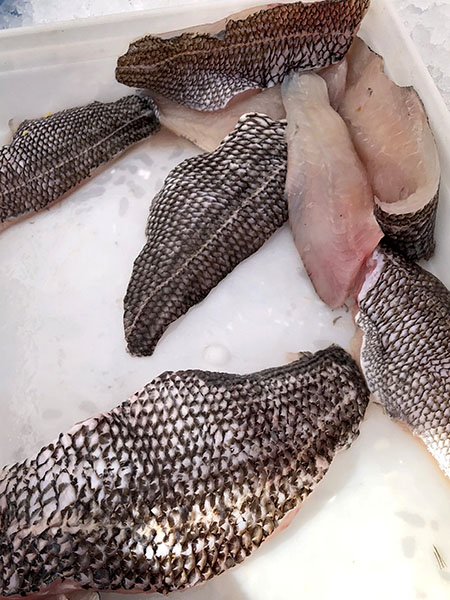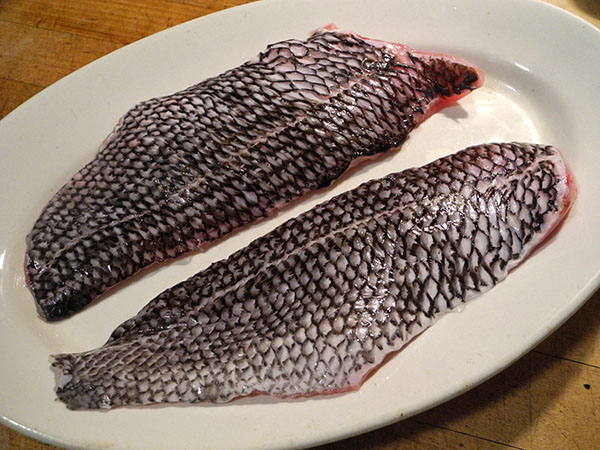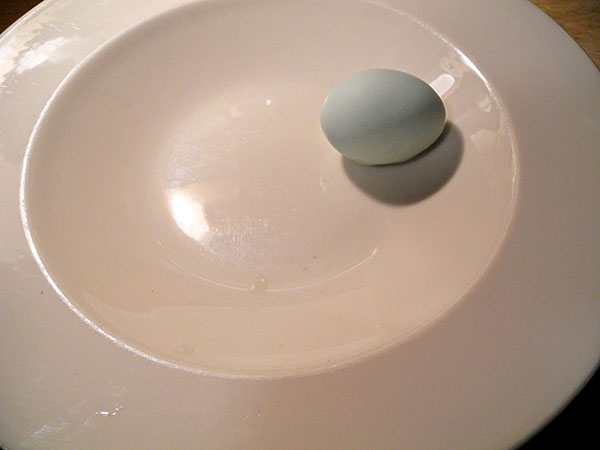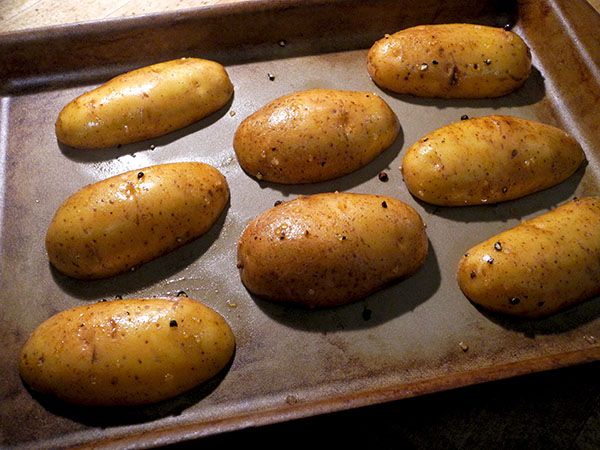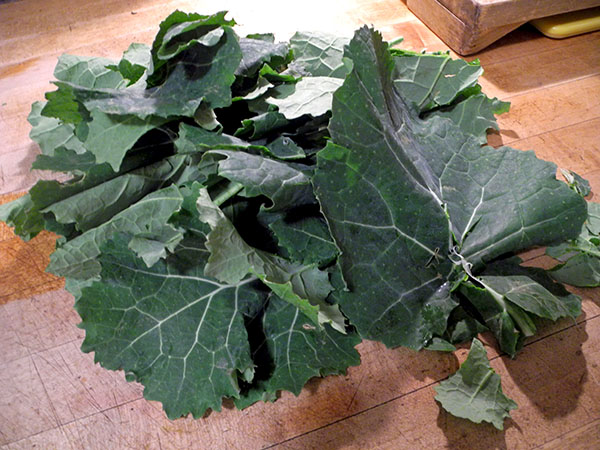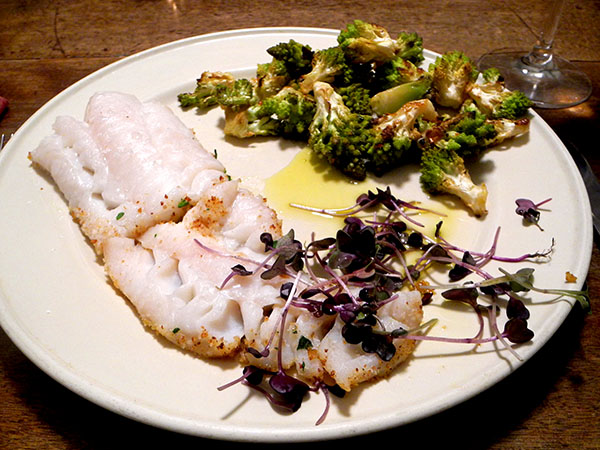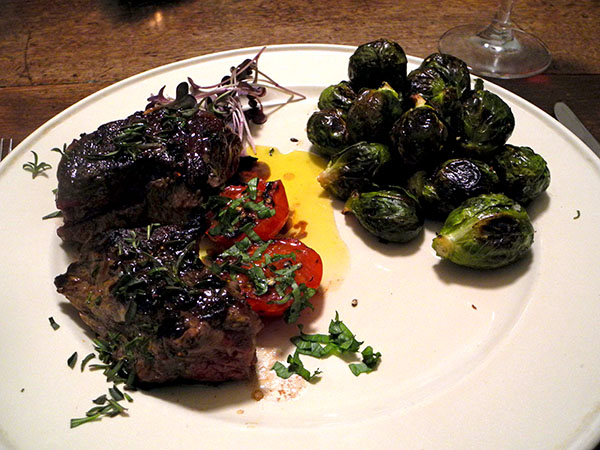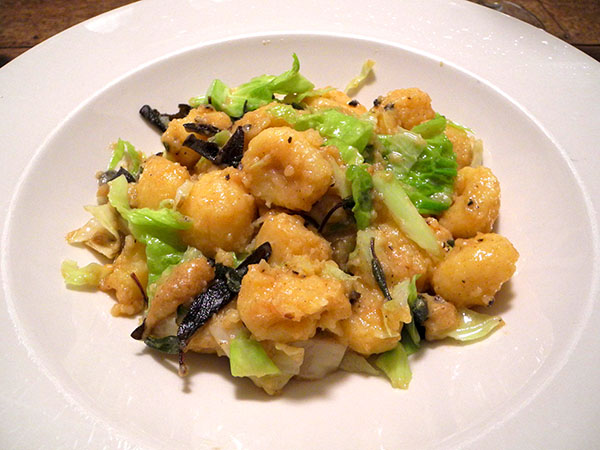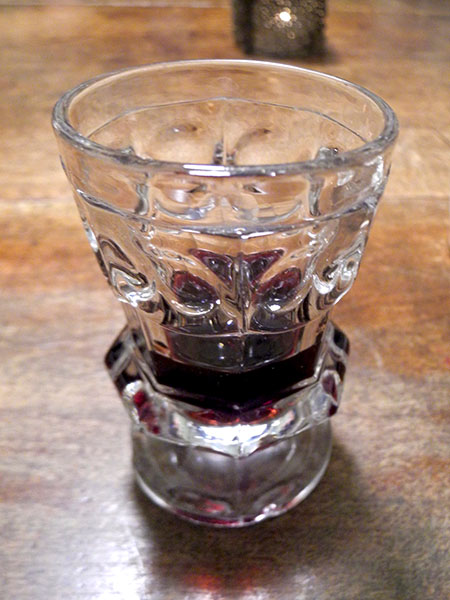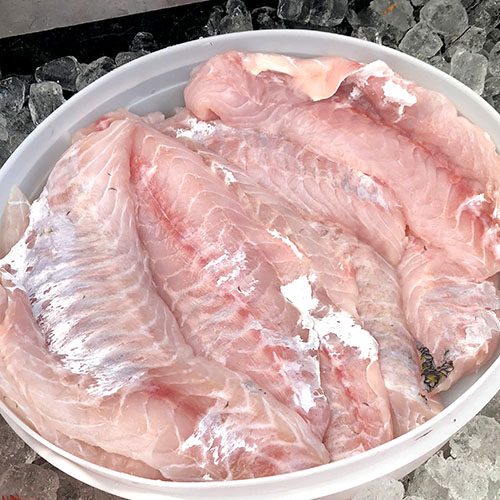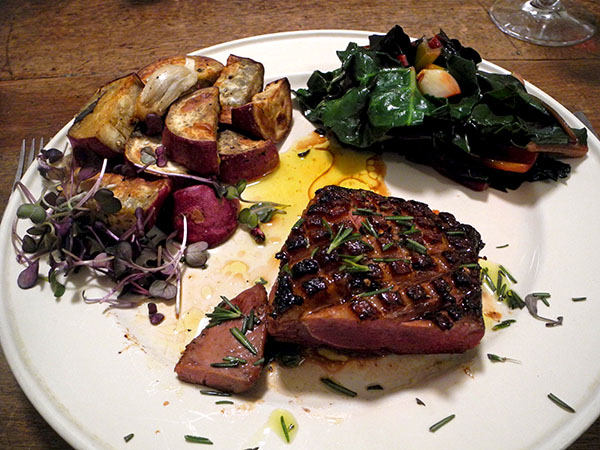
The idea of roasted Japanese sweet potatoes came first, shown here on the oven pan shortly before they had finished cooking,
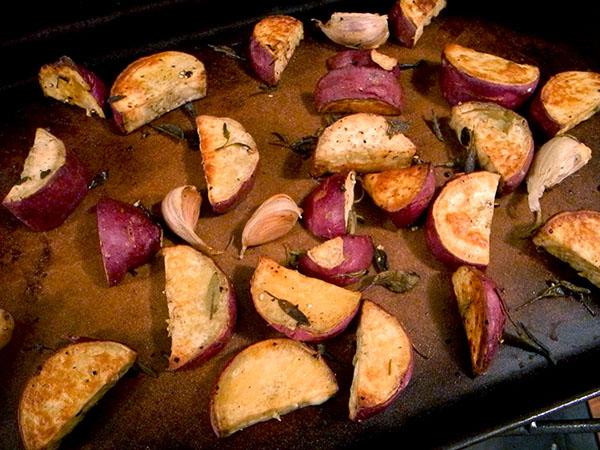
and then it only made sense that at the center of the meal there would be duck breast, if only because I had recently bought one, and had not yet moved it into the freezer. When I got to the Greenmarket, the second vegetable almost jumped into my arms: local rainbow chard, remarkably available here in the first days of February!
It was all good, very good.
- *one fresh, unfrozen 13-ounce duck breast from Hudson River Duck Farm, the fatty side scored in tight cross hatching with a very sharp knife, the entire breast then sprinkled top and bottom with a mixture of sea salt, freshly-ground black pepper, and a little turbinado sugar, left standing for about 45 minutes before it was pan-fried, the fatty side down first, inside a dry small oval enameled cast iron pan over medium heat for a total of 8 or 9 minutes, turning once, draining the oil after the first few minutes [to be strained and used in cooking later, if desired], removed when medium rare (cut into 2 portions to check that the center was of the right doneness, which means no more than medium rare), left to sit for several minutes before finishing it with a drizzle of juice from an organic lemon from Whole Foods Market, some chopped rosemary from Stokes Farm and a drizzle of olive oil
- *Japanese sweet potatoes, less than one pound, from Samascott Orchards, unpeeled, but scrubbed thoroughly, halved and sliced into one quarter to one half-inch crescents, tossed in a bowl with olive oil, sea salt, freshly-ground black pepper, 4 large unpeeled Rocambole garlic cloves from Keith’s Farm, at least a tablespoon of small dried sage leaves from Philipps Farm; and a bit of crushed dark dried habanada pepper, originally fresh from Norwich Meadows Farm, spread onto a large well-seasoned Pampered Chef unglazed ceramic oven pan, roasted at 400º for about 30 minutes, garnished with purple micro radish from Two Guys from Woodbridge
- one bunch of beautiful rainbow chard from Eckerton Hill Farm, purchased from their stall in the Union Square Greenmarket, wilted in a little olive oil in which 2 halved Rocambole garlic cloves from Keith’s Farm had first been heated and slightly softened, seasoned with sea salt and freshly-ground black pepper, and finished with a drizzle of olive oil
- the wine was a Washington (Columbia Valley) red, Michaud Merlot Columbia Valley 2015, from Naked Wines
- *the music was Mathias Spahlinger’s 1979/1980 work for violin and piano, ‘Extension’, performed by Hildegard Kleeb and Dimitris Polisoidis
